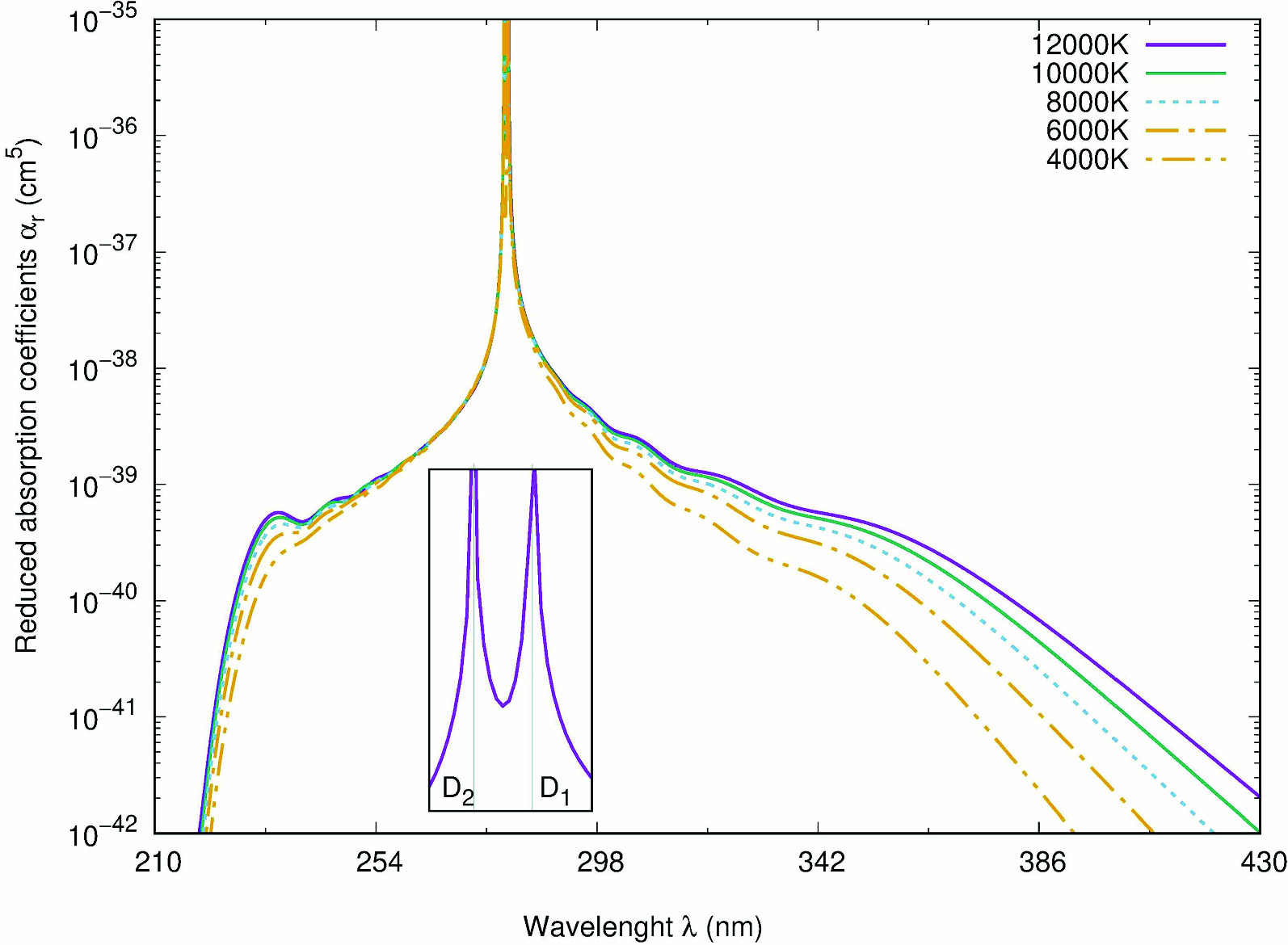https://doi.org/10.1140/epjd/s10053-024-00886-8
Regular Article - Molecular Physics and Chemical Physics
Full-quantum calculations of the pressure broadening  and
and  lines of Mg
lines of Mg magnesium ion in a gas of ground-state He helium atoms
magnesium ion in a gas of ground-state He helium atoms
1
Université Chérif Messaidia, B.P. 1553, 41000, Souk-Ahras, Algeria
2
Laboratoire de Physique de la Matière et du Rayonnement LPMR, Université Chérif Messaidia, B. P. 1553, 41000, Souk-Ahras, Algeria
3
Badji Mokhtar University, B.P. 12, Annaba, Algeria
c
kamel.alioua@univ-soukahras.dz
Received:
4
April
2024
Accepted:
18
June
2024
Published online:
5
July
2024
In this theoretical investigation, we have performed comprehensive quantum calculations to explore the pressure broadening effects on the  and
and  lines of the Mg
lines of the Mg magnesium ion when surrounded by ground-state He helium atoms. Our objective is to delineate the profiles of these pressure-broadened resonance lines and scrutinize their behavior in response to binary collisions between Mg
magnesium ion when surrounded by ground-state He helium atoms. Our objective is to delineate the profiles of these pressure-broadened resonance lines and scrutinize their behavior in response to binary collisions between Mg ions and He atoms. To accomplish this goal, we developed precise potential energy curves for the ground
ions and He atoms. To accomplish this goal, we developed precise potential energy curves for the ground  and the excited
and the excited  and B
and B , along with the associated transition dipole moments, using data derived from advanced ab initio methodologies such as SA-CASSCF, MRCI, and SO coupling, with Davidson and BSSE corrections. Our investigation encompasses a temperature range from 4000 to
, along with the associated transition dipole moments, using data derived from advanced ab initio methodologies such as SA-CASSCF, MRCI, and SO coupling, with Davidson and BSSE corrections. Our investigation encompasses a temperature range from 4000 to  and wavelengths spanning from 200 to
and wavelengths spanning from 200 to  . The theoretical profiles primarily exhibit dominant free-free transitions. Notably, around the
. The theoretical profiles primarily exhibit dominant free-free transitions. Notably, around the  wavelength region, a satellite peak appears in the blue wing, attributed to the B
wavelength region, a satellite peak appears in the blue wing, attributed to the B transitions. We have confirmed agreement between our theoretical findings and prior research.
transitions. We have confirmed agreement between our theoretical findings and prior research.
Copyright comment Springer Nature or its licensor (e.g. a society or other partner) holds exclusive rights to this article under a publishing agreement with the author(s) or other rightsholder(s); author self-archiving of the accepted manuscript version of this article is solely governed by the terms of such publishing agreement and applicable law.
© The Author(s), under exclusive licence to EDP Sciences, SIF and Springer-Verlag GmbH Germany, part of Springer Nature 2024. Springer Nature or its licensor (e.g. a society or other partner) holds exclusive rights to this article under a publishing agreement with the author(s) or other rightsholder(s); author self-archiving of the accepted manuscript version of this article is solely governed by the terms of such publishing agreement and applicable law.





